Nose Surgery in Johannesburg
Search and Compare the Best Clinics and Doctors at the Lowest Prices for Nose Surgery in Johannesburg

Find the best clinics for Nose Surgery in Johannesburg
With Medijump you can browse 3 facilities offering Nose Surgery procedures in Johannesburg. The cheapest price available is $3,168 in Cape Town, Johannesburg. And for the cheapest price globally, prices start from $101 in Poland.
Nose Surgery in South Africa
Price: $ 3,168
Nose Surgery in Cape Town
Price: $ 3,168
Poland offers the best prices Worldwide
Price: $ 101
From 72 verified reviews
Charlotte Sorour, 13 March 2020
Parking is a huge problem.On a positive note it is a great hospital with great specialists and doctor's hence why it is so busy. Well worth driving around a bit looking for parking knowing your loved one's are in good hands. My mind at ease. My husband is well looked after. Thank you Linksfield staff :)
From 38 verified reviews
Nompumelelo Madliwa, 19 April 2020
I had such a wonderful experience there with Dr Thomas, I had a skin drafting done it was such a smooth process I am healing very well and had a great stay there, Thank you so much
Dr Brian Wolfowitz, located in Council St, Johannesburg, South Africa offers patients Nose Surgery procedures among its total of 5 available procedures, across 2 different specialties. Currently, there's no pricing information for Nose Surgery procedures at Dr Brian Wolfowitz, as all prices are available on request only, whilst the national average price is approximately $3,807. All procedures and treatments are undertaken by the lead specialist at the Hospital, and they have multiple recognized accreditations, including: AAO - American Academy of Otolaryngology-Head and Neck SurgeryAAFPRS - American Academy of Facial Plastic and Reconstructive Surgery
- Home
- South Africa
- Johannesburg
Compare Before & After Photos of _procedure_photos.phpNose Surgery
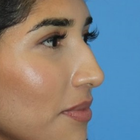
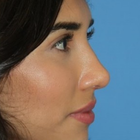
Full-side view
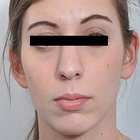

Front view
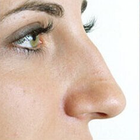
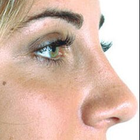
Full-side view
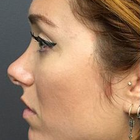
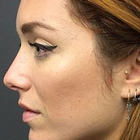
Full-side view
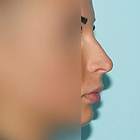
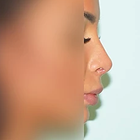
Full-side view

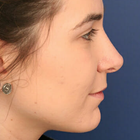
Full-side view
WHY US?
At Medijump, we're making medical easy. You can search, compare, discuss, and book your medical all in one place. We open the door to the best medical providers worldwide, saving you time and energy along the way, and it's all for FREE, no hidden fees, and no price markups guaranteed. So what are you waiting for?

Free

Best Price

Widest Selection

Risk-Free
What you need to know about Nose Surgery in Johannesburg
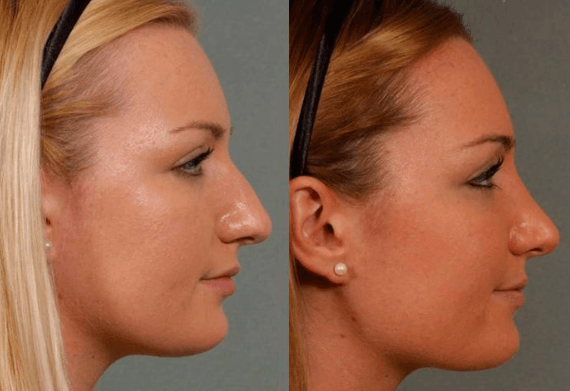
Commonly referred to as a Rhinoplasty, it is the medical term for reshaping of the nose or corrective surgery of the nose. It is one of the most common facial plastic surgeries (Facelift) procedures performed. Nose surgery can be performed to change the consequence of genetics, birth defect or nasal injury. It can be performed to enhance the appearance and/or to improve nasal breathing.
Surgery can be performed to correct nasal humps, the curvature of nose-bridge, nose tip irregularities, and asymmetry in the nostrils. The nasal appearance can be altered in various ways using intra-nasal chisels. Nose surgery procedures generally fall under three types: open rhinoplasty, closed rhinoplasty, and tip rhinoplasty. Rhinoplasty is normally performed under general anesthesia and will not leave any visible scars on the nose.
What does a Nose Surgery Procedure Involve?
Nose surgery is an individualized surgery. Before the surgery, you will need to discuss important factors with your surgeon to determine if it is suitable for you. Your surgeon will review your medical history, including your previous surgeries, medical conditions, and any medications you are taking. You will need to have a complete physical examination, such as blood tests. Your surgeon will also consider your other facial features, the skin on your nose, and what you would like to change or correct. Then, your surgeon will develop a customized plan for you. Two weeks before and after surgery, avoid any medications that contain aspirin or ibuprofen, such as Advil and Motrin IB because these medications can increase bleeding. You will need to also stop taking herbal remedies and over-the-counter supplements. If you are an active smoker, stop smoking because smoking can slow your healing process and increase the risk of getting an infection.
During the actual surgery, you will be given either local anesthesia or general anesthesia. The type of anesthesia depends on how complex the surgery is and what the surgeon would prefer to use. Then, the surgery will start by making incisions inside your nose or at the base of your nose between your nostrils. Your surgeon will reshape the inner bone and cartilage underneath your skin to make a more pleasing appearance.
There are several ways to change the shape of your nasal bones or cartilage, depending on your nose’s structure and how much needs to be removed or added. If only small changes are required, your surgeon may use cartilage taken from deeper inside your nose or your ear. However, for a much larger change, your surgeon may use cartilage from your rib, implants, or bone from other parts of your body. When the changes are finished, your surgeon will place the nose’s skin and tissue back. The incisions will be closed by stitches.
How Long Should I Stay in Johannesburg for a Nose Surgery Procedure?
If everything goes well, you can go back to your hotel on the same day once the effects of anesthesia wear off. However, you will need to stay in a recovery room for a few hours so the staff can monitor you. Some people may need to stay in hospital overnight. After you are discharged from the hospital, you will need to stay in Johannesburg for at least 10 to 14 days for initial recovery, follow-up checkups, and for the stitches to be removed.
What's the Recovery Time for Nose Surgery Procedures in Johannesburg?
The recovery period for nose surgery can be different from person to person. In general, 2 to 3 weeks is needed until you can get back to your full normal routine and 3 to 6 weeks until you can do any strenuous activity. However, you should be able to go back to work within a week, except if your job requires strenuous physical activity. You will feel gradually better each day in the first week. You will experience swelling, which can take six months to subside. The only people who will notice the swelling is you and your surgeon. Your final nose shape will be apparent after it is completely healed.
What sort of Aftercare is Required for Nose Surgery Procedures in Johannesburg?
After the surgery, you may need to wear a nasal splint for the first week. The splint is used to protect and support your nose. Your nose may be congested due to swelling or from the nasal splint. You need to rest in bed with your head raised higher than your chest to reduce bleeding and swelling. For a few days after the surgery, you may also experience slight bleeding and drainage of mucus. Your surgeon may place a “drip pad” under your nose to absorb drainage.
Your surgeon may ask you to avoid strenuous activity, take baths instead of showers, avoid blowing your nose, eat high-fiber foods to avoid constipation, not to do any facial expressions (smiling or laughing), not wearing pull clothing and wear button-downs instead.
For at least several weeks after the surgery, do not rest eyeglasses or sunglasses on your nose to prevent pressure. You should also wear SPF 30 sunscreen when you are outside because too much sun can cause permanent irregular discoloration to your nose. Do not put anything such as ice or cold packs on your nose even though it is swelling as the swelling will go away faster by limiting your dietary sodium.
What's the Success Rate of Nose Surgery Procedures in Johannesburg?
Nose surgery is known to have around 80% to 90% success rate. Nevertheless, just like any other surgery, it still has possible risks and complications. These risks are bleeding, infection, numbness, permanent nerve damage, and an adverse reaction to the anesthesia. You should call your surgeon immediately if you suspect any of the symptoms. Other possible risks are difficulty breathing through your nose, uneven-looking nose, persisting pain, swelling, and discoloration, scarring, septal perforation, and the need for a second or third surgery.
For an in-depth analysis of the closed rhinoplasty procedure with before and after images, watch this short video.
Are there Alternatives to Nose Surgery Procedures in Johannesburg?
If you do not want to undergo surgery, or if it is not suitable for you, you can get filler injections, such as Botox, Juvaderm, and Restylane. They can change the shape of your nose and only require a short visit to the doctor. This method is not painful and needs no incisions or stitches.
Whilst the information presented here has been accurately sourced and verified by a medical professional for its accuracy, it is still advised to consult with your doctor before pursuing a medical treatment at one of the listed medical providers
No Time?
Tell us what you're looking for and we'll reachout to the top clinics all at once
Enquire Now

Popular Procedures in Johannesburg
Prices Start From $404

Prices Start From $111

Prices Start From $70

Prices Start From $220

Prices Start From $1,945

Prices Start From $192

Prices Start From $500

Recommended Medical Centers in Johannesburg for Nose Surgery

- Interpreter services
- Translation service
- Religious facilities
- Medical records transfer
- Medical travel insurance
- Health insurance coordination
- TV in the room
- Safe in the room
- Phone in the room
- Private rooms for patients available

- Interpreter services
- Translation service
- Religious facilities
- Medical records transfer
- Medical travel insurance
- Health insurance coordination
- TV in the room
- Safe in the room
- Phone in the room
- Private rooms for patients available

- Interpreter services
- Translation service
- Religious facilities
- Medical records transfer
- Medical travel insurance
- Health insurance coordination
- TV in the room
- Safe in the room
- Phone in the room
- Private rooms for patients available

- Interpreter services
- Translation service
- Religious facilities
- Medical records transfer
- Medical travel insurance
- Health insurance coordination
- TV in the room
- Safe in the room
- Phone in the room
- Private rooms for patients available
Nose Surgery in and around Johannesburg
About Johannesburg
Johannesburg is the most populous as well as the largest city in South Africa. There is a lot to see and do in Johannesburg. Home to the Apartheid Museum, it is the perfect place for anyone who loves history and wants to learn more about the country’s past. There are also MOAD and MuseuMAfriCA that exhibit the city’s art and history. Other than the museums, the metropolitan city has a number of other things to do, such as enjoying Gold Reef City, shopping in its many markets, and visiting The Cradle of Human Kind.
Today, people have found a new reason to visit Johannesburg: medical tourism. Although it is not as widely known as other medical tourism destinations in other parts of the world, the city has seen a steady rise in medical tourists. The urban city features public and private medical centers with the highest standards, well-trained medical practitioners, and cutting-edge technology. Most of the medical centers have English speaking doctors, nurses, and staff, so there is no language barrier for foreign medical tourists. Plastic surgery, particularly tummy tuck, is one of the more popular procedures since it is much cheaper here than in Western countries.
Popular Areas in Johannesburg
While Johannesburg is not a popular tourist destination, there are a number of things to see and do in the city. The city is mostly known as Nelson Mandela’s home and has an array of astonishing museums. Those who love history and want to learn about the country’s struggle will enjoy the Apartheid Museum. It exhibits the story of apartheid through photographs, film footage, clippings, newspaper, and artifacts. Mandela House in Soweto Street is also worth a visit. It was once Nelson Mandela’s home. The museum showcases photographs, paintings, as well as awards and recognitions earned by Nelson Mandela.
One of the most popular places is the Lion Park. The safari park offers an amazing chance to watch lions and several other animals up close. There are also other activities such as animal interactions and hand-feeding a few animals, such as ostriches and giraffes. Other than the Lion Park, Pilanesberg National Park is famous among wildlife enthusiast. The national park is filled with opulent ecosystem and wildlife. Tourists can experience a safari and spot lions, rhinos, elephants, leopards, zebras, and over 300 bird species in their natural habitat.
Johannesburg is popular for its art and you must visit the Maboneng Precinct where you will find art-studios and shops selling art pieces. Wits Art Museum is another great place to admire African art. If you want to know more about the culture, Lesedi Cultural Village is the best place to go. Here, tourists can learn more about traditional South African culture and a chance to encounter people of Zulu, Pedi, Ndebele, Xhosa, and Basotho origin. Other places including SAB World of Beer, Gold Reef City, Holly Hill, Market Theatre, Constitution Hill, and Mary Fitzgerald Square are also a must-visit.
Weather and Climate in Johannesburg
Johannesburg experiences a subtropical highland climate. The summer, which runs from October to April, is characterized by hot days with thundershowers in the afternoon and cool evenings. The temperature is mostly mild during the summer. January is one of the hottest months, with an average maximum daytime temperature of 25.6 °C. The summer has an extreme UV index, sometimes reaching as high as 14-16. Therefore, tourists must wear sun-protective clothing and apply sunscreen during the day to avoid sunburn.
In the winter, the city enjoys sunny days and cold nights. This season is dry, and the average maximum temperature is around 16 °C. In June and July, the temperature can drop to 4.1 °C and occasionally drops below freezing at night. The freezing temperature causes frost, but snow is rare. It is advisable to bring warm clothing during this season.
Getting Around in Johannesburg
International visitors usually arrive at O. R. Tambo International Airport, also known as Johannesburg International Airport. It is Africa’s busiest airport and the primary airport that serves domestic and international travel. The airport connects South Africa with various cities all over the world, including London, Abu Dhabi, Atlanta, Singapore, and Sydney. It is the hub for South Africa’s largest domestic and international airlines, South African Airways. Budget airlines such as FlySafair, Mango, and Kalula operate flights from this airport for an inexpensive travel option.
Johannesburg has a vast public transport system. The Gautrain rapid-rail is safe and fairly easy to navigate. The rail also links the city center with O. R. Tambo International Airport. For efficient transport, tourists can opt for the Rea Vaya bus service that has a circular route through the city and is useful to explore the City Center at a reasonable cost. Many locals will use the minibus taxi network, but it can be pretty confusing for foreign tourists. Passengers need to know a route to their destination, hail the minibus taxi from the street, and once they have arrived at their desired destination, they need to make a hand signal to stop the minibus.
Metered taxis are available but can be quite expensive. The taxis are mostly found outside hotels. Since there are only a few places to hail a taxi in the street, the best way to hail a taxi is by phone. Be careful because many taxis do not use meters so tourists would need to negotiate the price before getting in. The most reliable metered taxis are Orange Cabs, Quick Cab, and Zebra Cabs. Uber is also available for safer, quicker, and more affordable transport.
Tourist Visas in Johannesburg
All visitors who wish to enter South Africa must hold a passport valid for at least 30 days after the expiration of their intended visit and must have at least two unused pages. Passport holders of more than 60 countries can enter and stay for up to 90 days in the country without a visa. Other nationals not listed in the visa exemption agreement must obtain a visa to the nearest South Africa embassy or consulate. The South Africa Immigration Department also offers Medical Treatment Visa for medical tourists.
Additional Information
- Local Currency: The local currency is the South African Rand (ZAR). 1 USD is equivalent to 14 ZAR.
- Money & Payments: ATMs are available at every commercial center. Most hotels, restaurants, and shops accept credit cards (especially MasterCard and Visa). However, be sure to always carry some cash since there are several cases of credit card fraud. Tourists must tip car guards, but should not tip minibus taxi drivers. For bars and restaurants, 10% to 20% of the bill is acceptable.
- Local Language: Most people will speak more than two languages, including Nguni, Sotho, English, Afrikaans, and Tshivenda.
- Local Culture and Religion: More than 50% of the population follows Christianity and more than 20% are not affiliated with any religion. There are small groups of Muslim, Jewish, and Hindus.
- Public Holidays: There are around 12 official public holidays in the city such as Good Friday, Freedom Day, Heritage Day, and Christmas Day.
Popular Searches
- Plastic Surgery in Thailand
- Dental Implants in Thailand
- Hair Transplant in Thailand
- Breast Augmentation Thailand
- Gastric Sleeve in Thailand
- Gender Reassignment Surgery in Thailand
- Laser Hair Removal in Bangkok
- Botox in Bangkok
- Dermatology in Bangkok
- Breast Augmentation in Bangkok
- Coolsculpting in Bangkok
- Veneers in Turkey
- Hair Transplant in Turkey
- Rhinoplasty in Turkey
- Stem Cell Therapy in Mexico
- Rhinoplasty in Mexico
- Liposuction in Mexico
- Coolsculpting in Tijuana
- Rhinoplasty in Korea
- Scar Removal in Korea
- Gastric Sleeve in Turkey
- Bone Marrow Transplant in India
- Invisalign in Malaysia
- Plastic Surgery in the Dominican Republic
- Tummy Tuck in the Dominican Republic
- Plastic and Cosmetic Surgery in Poland
- Rhinoplasty in Poland
- Hair Implant in Poland
- Dental Implants in Poland
- IVF in Turkey


